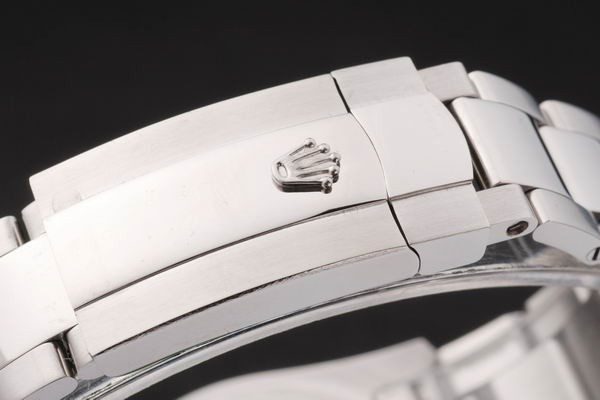The Fascinating Story Of The Rolex Oyster Bracelet
Why write a story about some random stainless steel bracelet that has been around for many years? I truly believe that the Oyster bracelet and associated end links have played an important role in the history of copy Rolex, perhaps even as important as the original water-resistant case. It is a happy coincidence that the Oyster bracelet is celebrating its 70th anniversary this year. 
The simple design of the replica Rolex Oyster bracelet blends perfectly with the utilitarian lines of the Submariner and GMT-Master. On the wrist, it wears well and the seemingly simple clasp works perfectly. However, it would be a mistake to call the modern Oyster strap as we know it today a single work of genius. Its creation was more a process of continuous improvement; Rolex patiently ensured that the Oyster bracelet is still the most practical product available, with little or no tinkering over the years. As a result, the bracelet alone provides an insight into Rolex’s culture and, in particular, its obsession with important details.
Initially, Oyster bracelets were used primarily for so-called “bubble backs” and chronographs, while straps remained a more common choice in the Rolex portfolio. The design and construction of the Oyster bracelet remained virtually unchanged for fifteen years after its introduction, but a groundbreaking addition was introduced in 1952. Prior to this, the Oyster bracelet was only available with a straight link, but the eventual patent number 303,005 breathed life into the coveted end links that completed the Rolex look we know today.
The first generation was often referred to as the “rivet bracelet” because of the distinctive rivets on the outer edge that held the hollow folding links together. Next, we get the “folded link bracelet”, which shows higher links that are made by folding a piece of metal multiple times. For these bracelets, the pins are internal and not visible on the outer edges. The final shape is obviously the thickest, with really solid links. This is the configuration you now see on modern Rolex replica watches.
Obviously, the Oyster bracelet has been copied many times, and to be fair, its design can’t be attributed entirely to Rolex. But for the past 70 years, it has been the benchmark by which all other sports watch straps are judged. Arguably, some of the designs have proven to be more refined – the Royal Oak’s attractive bracelet comes to mind – however, it would be hard to find a better function-driven tool fake watch bracelet anywhere. I mean, if it’s good enough for 007 ……
It would be unfair to stop our research at the link level, as Rolex does not limit its focus to the resistance of the links, no matter how important this element is. In addition to the evolution described above, the end links themselves have become thicker.
Another important evolution has to do with the clasp. Although the folding of two curved blades and an overlapping clasp proved to be effective and simple, this mechanism was still prone to unnecessary cracking when subjected to strong shocks.